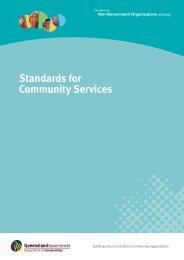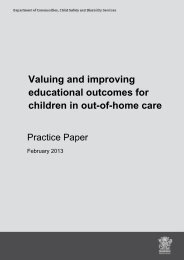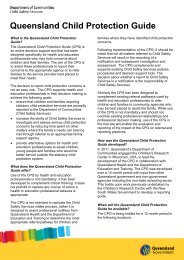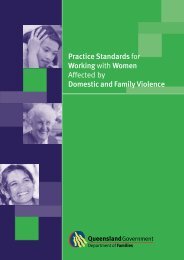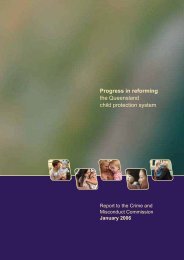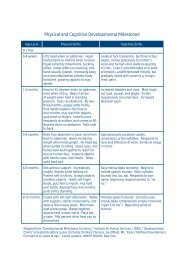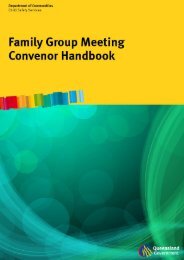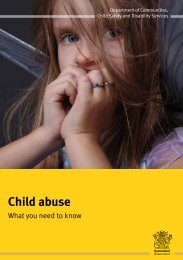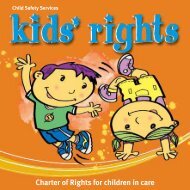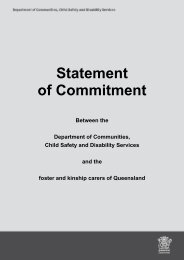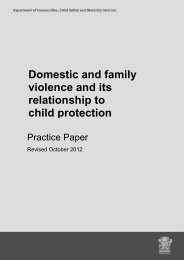Housing and Support Program (HASP): Final Evaluation Report
Housing and Support Program (HASP): Final Evaluation Report
Housing and Support Program (HASP): Final Evaluation Report
Create successful ePaper yourself
Turn your PDF publications into a flip-book with our unique Google optimized e-Paper software.
50<br />
Section 5 The opportunities available through the program for clients<br />
to maximise their recovery <strong>and</strong> participate in community life<br />
Clients were asked to describe what they would like<br />
to have as their main activity. A large proportion<br />
(43.4%) indicated that they would like paid employment<br />
as their main activity in the future. This suggests that<br />
there is considerable scope for clients to focus on<br />
employment. Another 21% outlined that they would<br />
like to have craft/hobbies as their main activity.<br />
5.4 Involvement in activities<br />
Clients were also asked to rate how they felt about their<br />
level of involvement in the activities described above.<br />
They were asked to indicate whether they were engaged<br />
in activities ‘less than they would like’, ‘more than they<br />
would like’, <strong>and</strong> ‘as much as they wanted to be’.<br />
Overall, 60% of clients were happy with their<br />
engagement in activities. However, almost one-third<br />
of the clients indicated that they would like to be<br />
involved in activities more than they were at present.<br />
Further analysis of this data indicated that 67% of<br />
those who wanted more activities were the same group<br />
that indicated they wanted employment as their main<br />
activity (see graph below).<br />
Fig. 5.3 Client perceptions of level of engagement<br />
in activities<br />
Percent<br />
80<br />
60<br />
40<br />
20<br />
0<br />
Less than<br />
I would like<br />
<strong>Final</strong> <strong>Evaluation</strong> <strong>Report</strong><br />
More than<br />
I would Like<br />
Involvement in activities<br />
As much<br />
as I like<br />
5.5 Number of friends<br />
The number of friends one has can be one indicator<br />
of community integration. We asked clients to tell<br />
us about the number of people that they would call<br />
friends. While 7% of <strong>HASP</strong> clients claimed to have<br />
‘no friends’, over one-third indicated that they had<br />
more than fi ve friends. It is clear from the information<br />
collected that many clients included family members<br />
as their friends.<br />
Fig. 5.4 Number of friends<br />
Percent<br />
40<br />
30<br />
20<br />
10<br />
0<br />
None<br />
1–2 friends<br />
3–5 friends<br />
Number of friends<br />
5.6 Satisfaction with the number<br />
of friends they have<br />
The majority of clients were either very satisfi ed<br />
or moderately satisfi ed with the number people they<br />
called friends.<br />
Fig. 5.5 Satisfaction with number of friends<br />
Percent<br />
50<br />
40<br />
30<br />
20<br />
10<br />
0<br />
Very<br />
satisfied<br />
Moderately<br />
satisfied<br />
Neither<br />
Satisfaction with number of friends<br />
More than<br />
5 friends<br />
Moderately Very<br />
dissatisfied dissatisfied



